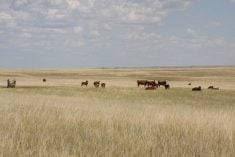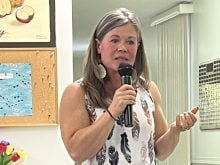Thirty-eight of the largest and oldest water licensees in southern Alberta — including irrigation districts — have agreed to reduce their water use if severe drought conditions develop this spring or summer.
Described by the province of Alberta as “the largest water-sharing initiative in Alberta’s history,” these agreements are intended to ensure Albertans receive the water they need in the event of drought and minimize economic and environmental impacts on communities.
There are four water-sharing agreements, one each to cover the following sub-basins of the South Saskatchewan River Basin: the Red Deer River, the Bow River, the main stem of the Oldman River and the upper tributaries of the Oldman River.
Read Also

Huge Black Sea flax crop to provide stiff competition
Russia and Kazakhstan harvested huge flax crops and will be providing stiff competition in China and the EU.
Specific commitments are laid out in each mmemorandum of uunderstanding, but generally speaking:
- Participating irrigation districts will use less water, allowing other users to get their water first. They will then use the remaining water available for licensed use.
- Participating municipalities will reduce water consumption by five to 10 per cent from expected 2024 summer demands. The province considers these “reasonable targets that can be achieved without affecting indoor water use.”
According to cbc.ca, participating municipalities include the cities of Calgary, Lethbridge, Medicine Hat and Red Deer; the towns of Drumheller and Stettler, and the counties of Lethbridge, Red Deer and Warner.
- Participating industries will use only the minimum volume of water practical to maintain safe, reliable operations. They will also look for additional water conservation opportunities.
“For many years, Alberta’s irrigation districts have been collaborating with the Government of Alberta and other water licence holders in the South Saskatchewan River Basin to progress responsible water use within the SSRB,” wrote Alex Ostrop, chair of the Alberta Irrigation Districts Association, in a news release.
“The 2024 water-sharing agreements continue this important co-operation and put into action irrigation districts’ longstanding commitment to provide water for human use and livestock sustenance in times of extreme drought.”
The water amounts under the agreements will be updated every two weeks based on the latest water supply forecast as well as a number of hypothetical river flow scenarios and conditions. This is meant to ensure water use doesn’t outpace supply.


















